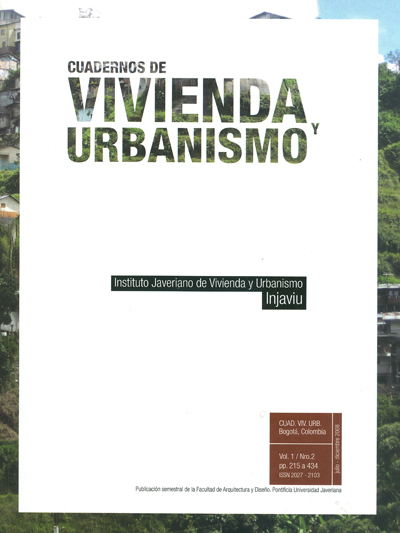Resumen
Mediante un proceso metodológico cualitativo, y dentro de un marco de análisis, que recoge aspectos tratados desde la geografía humana, este artículo describe la estructura espacial subyacente en Barrancabermeja. Más específicamente, la segregación socioespacial actual, sus factores y características, fruto de las condiciones socioeconómicas de la población y de la ausencia de políticas públicas reales de planificación y ordenación del territorio y de la violencia, que ha azotado a la ciudad y en general, a la región del Magdalena Medio. En este contexto, el documento se convierte en una aproximación empírica importante hacia la formulación de políticas públicas que permitan disminuir, no solo la segregación negativa y los desequilibrios funcionales de la ciudad, sino los estigmas generados hacia las comunidades de los sectores con condiciones socioeconómicas más bajas y caracterizados históricamente por sus altos niveles de violencia, producto del conflicto armado interno.
Esta revista científica se encuentra registrada bajo la licencia Creative Commons Reconocimiento 4.0 Internacional. Por lo tanto, esta obra se puede reproducir, distribuir y comunicar públicamente en formato digital, siempre que se reconozca el nombre de los autores y a la Pontificia Universidad Javeriana. Se permite citar, adaptar, transformar, autoarchivar, republicar y crear a partir del material, para cualquier finalidad (incluso comercial), siempre que se reconozca adecuadamente la autoría, se proporcione un enlace a la obra original y se indique si se han realizado cambios. La Pontificia Universidad Javeriana no retiene los derechos sobre las obras publicadas y los contenidos son responsabilidad exclusiva de los autores, quienes conservan sus derechos morales, intelectuales, de privacidad y publicidad.
El aval sobre la intervención de la obra (revisión, corrección de estilo, traducción, diagramación) y su posterior divulgación se otorga mediante una licencia de uso y no a través de una cesión de derechos, lo que representa que la revista y la Pontificia Universidad Javeriana se eximen de cualquier responsabilidad que se pueda derivar de una mala práctica ética por parte de los autores. En consecuencia de la protección brindada por la licencia de uso, la revista no se encuentra en la obligación de publicar retractaciones o modificar la información ya publicada, a no ser que la errata surja del proceso de gestión editorial. La publicación de contenidos en esta revista no representa regalías para los contribuyentes.


